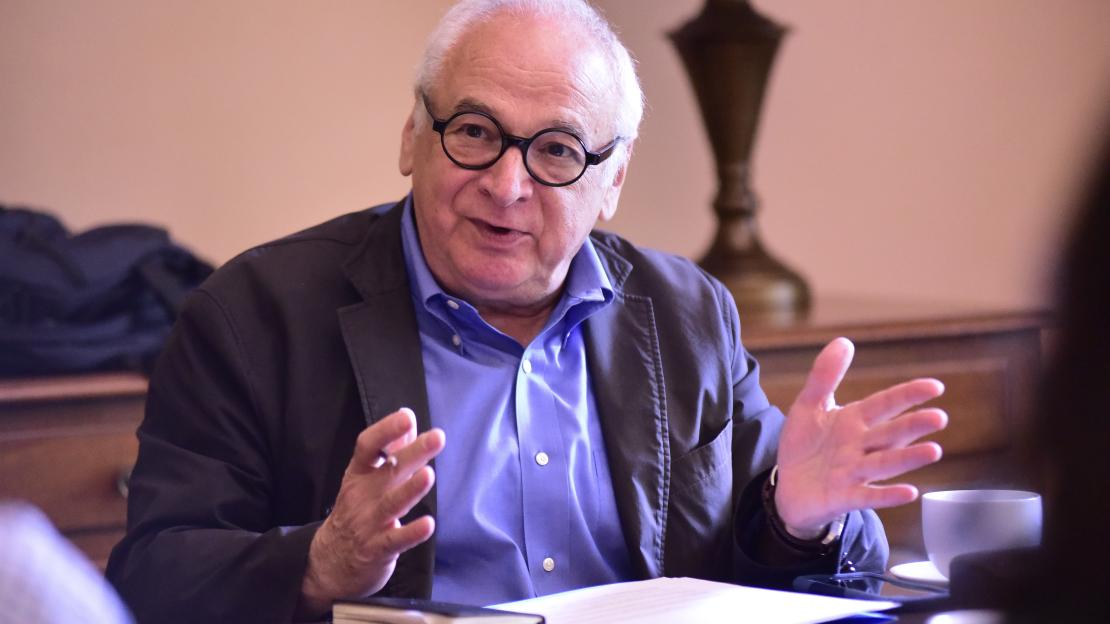A journalist’s job, like any other profession, is not without its challenges. But recent events suggest the ability to safely perform basic aspects of the job, like reporting live on location, are becoming less certain. Journalists reporting from conflict zones assume risks whenever conducting live interviews, but for local news reporters, safety is often assumed.
Earlier this August, Russian journalist, Nikita Razvozzhayev, was punched by a man while broadcasting live from a Moscow park to a Russian news channel. In 2015, a group of men directed vulgar statements at CityNews reporter Shauna Hunt as she reported live to studio from a Toronto FC game. A quick search of YouTube will bring up countless other examples.
Jeffrey Dvorkin, director of the Journalism program at U of T Scarborough explains that an increase in attacks can be attributed to societal shifts and changes in news organizations. Writer, Raquel Russell spoke with Dvorkin about live interviews, its place in news gathering and how journalists can take precautions in the field.
What is a live interview and why is it necessary in journalistic reporting?
In local news, a number of studies were done by ‘news doctors’ – people who were hired by news agencies or networks to find a way of making their stories more visually appealing – and one of the things studies found was that if you put the reporter out in the field, this will automatically give a certain amount of credibility to the story.
Live reporting basically takes its form from foreign reporting where you had reporters out in dangerous situations that gave a certain reality to the story, but it also gave a certain emotional context and television is as much about emotion as it is about anything else. Having that reporter out there looking and sounding a bit vulnerable tends to raise the visual interest for the audience, or at least that was the theory.
A Russian reporter was punched in the face earlier this August while reporting from a park. In Toronto, many witnessed CityNews reporter Shauna Hunt verbally harassed on live television. Why do you think these types of attacks are happening?
At a certain point in time, news organizations decided to save money by only sending a reporter out by themselves without a camera person, without a producer to help set up the shot and be a second set of eyes and ears. This frankly, in an internet age, rendered the reporter more vulnerable.
Part of it is the fallout from this digital environment we live in where anonymity is considered to be of highest value. People tend to say stupid things when they think they’re anonymous.
Earlier this year there was an interview in Washington with a member of the alt-right. As the reporter was interviewing him on the streets, someone came up and punched him right on camera and that became the story. Whatever the editorial direction of the story, it vanished.
What we’re seeing now is a return to studio and clearly a return to a more protected journalistic environment where the reporter goes out and has the assistant of the camera person or producer, basically to tell these hecklers to go away. It makes for less visually interesting television, but it may make for a more editorial understanding of the story if the reporter is able to calmly gather the information and make the story about the content rather than the emotional sidebar.
Would you say the harassment some journalists experience on social media is reflective of attacks on-camera reporters have experienced?
Reporters are now understanding that there’s a certain danger that comes with doing their job thanks to the digital culture and this is something news organizations have to be aware of and figure out ways in which reporters aren’t put under enormous amounts of stress.
Previously war correspondents, people who did a lot of crime reporting, were the journalists ending up with PTSD and now we’re seeing it with photo editors, desk editors and copy editors. There is so much harshness out there that we have to figure out a better way that we can support good journalism and good journalists and do it in a way that is going to inform the public as citizens and not just sort of the headlines, click bait that gathers eyeballs for a media organization.
What do you say to the suggestion that these attacks are due to an erosion of respect for journalism and news organizations?
All large institutions — media, government, education – they are under attack. The deference that the public used to give to the academy, the church, the media is gone. We’re living in more troubled times, so our obligation is to present information, educational opportunities and development opportunities that make sense to people and not just retreat behind ivory towers.
What can reporters do, especially in a time where tensions between media, the public and government are evident?
Journalists need to make demands on their bosses, on their managers, to say ‘I cannot work under these conditions. I won’t work under these conditions. You, my boss, have to do something to help me do a better job and do a job in which I do not feel threatened.’
It’s just normal for people in any line of work to have the expectation that they can work without fear. To work without fear is something that is so elemental. We have to figure out ways in which news organizations, and any large institution, can do this in a way that makes people not feel uncomfortable, whether they’re journalists or students. We don’t censor, but we have to make things safe. That’s going to be the challenge.
